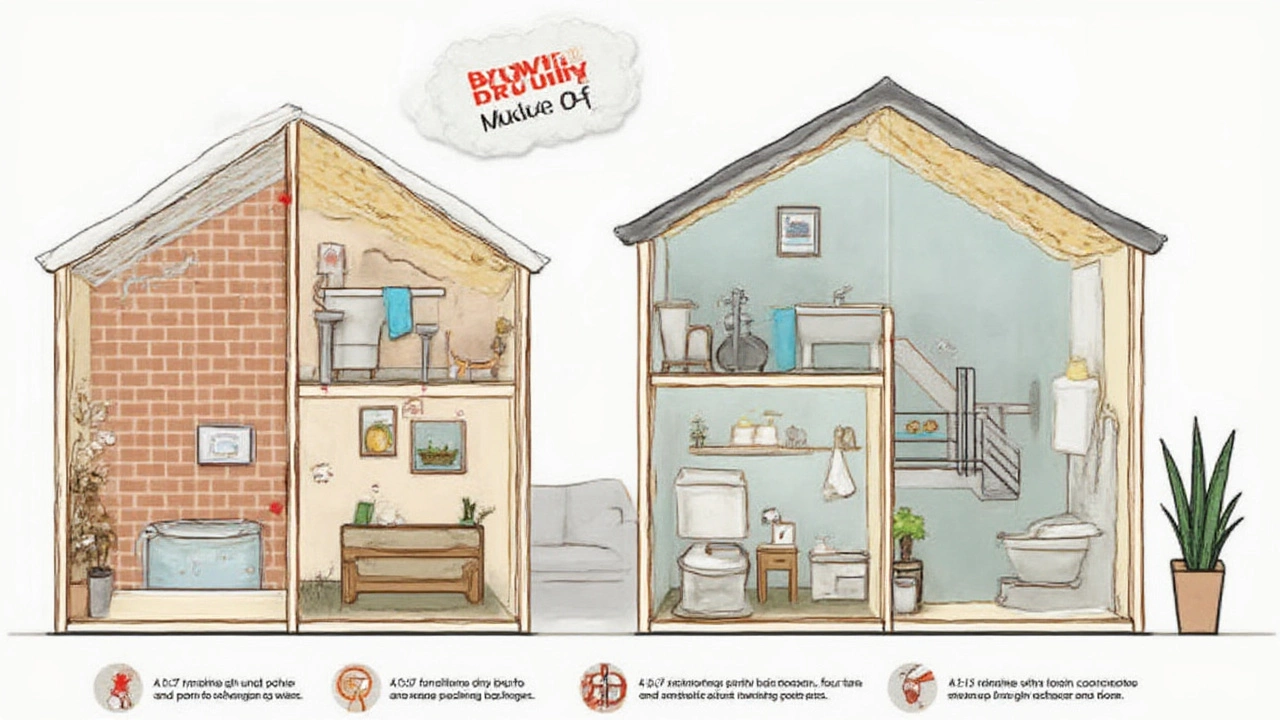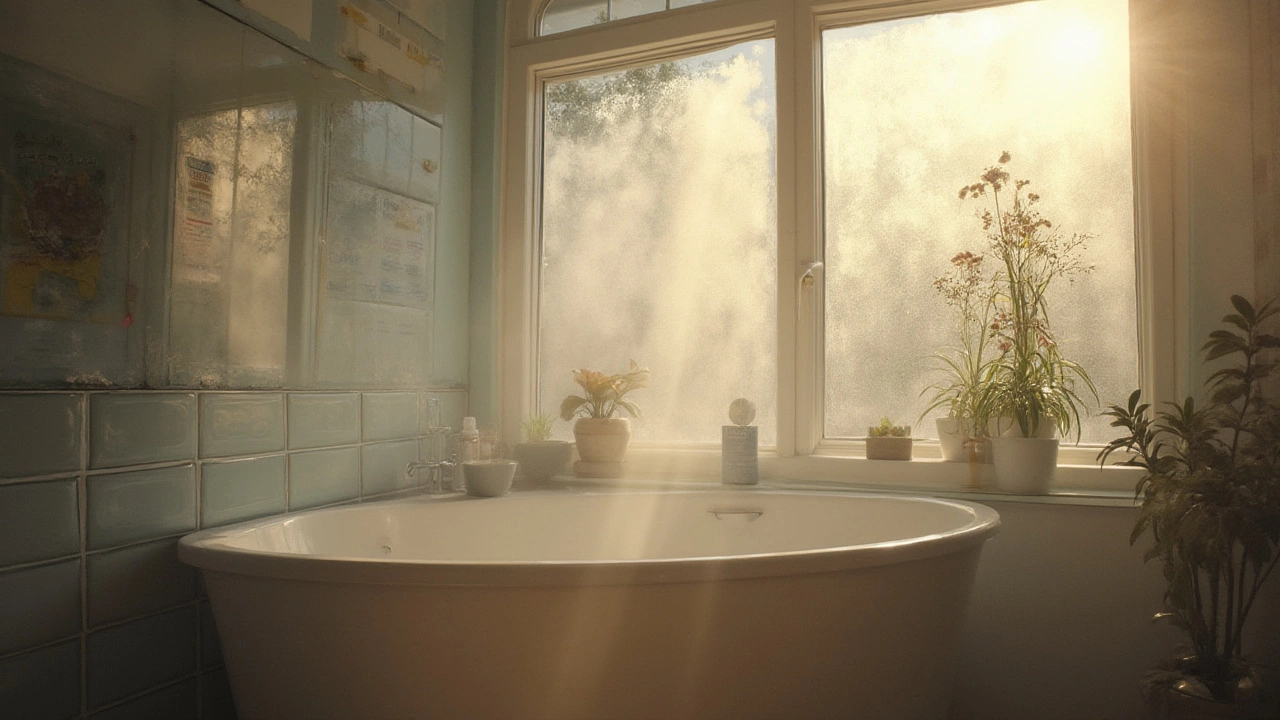Picture yourself stepping out of a hot shower, and the mirror fogs, water clings to the walls, and the air feels sticky. Now, imagine there’s no extractor fan whirring overhead to clear things up. Is this actually a problem, or just a hassle you can swipe away with a towel? A lot of folks are skipping extractor fans for looks, budget, or faith in a window—but is that enough? Let’s peel back the layers and see if going fan-free is smart, risky, or just plain old-fashioned.
What Does an Extractor Fan Actually Do?
First off, extractor fans are those unsung heroes that quietly pull steamy, smelly, or stale air out of rooms—mainly bathrooms and kitchens. They’re not just there because someone thinks your soup smells weird or your shower’s too hot. They serve a real purpose: controlling humidity, getting rid of odors, and making sure the air isn’t a breeding ground for things you do NOT want growing at home. Imagine how moisture from every shower, bath, or cooking spree adds up. Without a fan, that moist air hangs around, seeps into the walls, settles on ceilings, and loves to sneak into dark corners.
Why does this matter? Water is sneaky. Surfaces and air that stay damp can make the perfect playground for mold. You know those black streaks in corners or fuzzy patches peeling wallpaper? That’s often mold, and some types—like black mold—aren’t just ugly, they can give you headaches, coughs, sinus problems, and make asthma way worse. The World Health Organization has flagged indoor air pollution—including excess moisture from unventilated bathrooms—as a risk factor for respiratory issues, especially for kids and older folks. In the UK, a 2022 survey by the Housing Ombudsman showed that 48% of tenant complaints related to damp or mold.
Extractor fans don’t just clear damp air. Cooking up a storm or a late-night snack? Fans pull out smoke, airborne fat (yep, fat in the air), and chemicals from food. This isn’t just being picky: those floating micro-droplets of oil can cling to surfaces, attract dust, and trap smells. And it’s not just kitchens—nasty ammonia smells in bathrooms from cleaning products or lingering after you’ve used the toilet can hang out way too long. Without mechanical ventilation, those smells and substances stick around, clinging to towels, curtains, and paint.
Some people think just opening a window gets the job done. Here’s the deal: in summer or on breezy days, a wide-open window can help—but only if you leave it open long enough, and the air outside is actually drier. Ever tried airing out a steamy room in winter, when the cold outside air can lead to condensation the second it hits a chilly wall? Not great. And on rainy or humid days, windows barely help. Extractor fans work all year, no matter the weather, and they don’t care if the window is stuck.
If you’re into numbers, ventilation experts say you want at least eight air changes per hour in a small bathroom to keep up with showers and baths. Most extractor fans are rated to clear 15-30 liters of air per second (look for "l/s" on fan specs). Bathrooms in new homes are often required by building codes to hit at least 15 l/s. That's a lot more than a cracked-open window usually manages, especially in high-moisture seasons.
| Room Type | Min. Recommended Extraction Rate (l/s) | Typical Fan Power Used |
|---|---|---|
| Bathroom | 15 | 6-12W |
| Kitchen | 60 | 10-30W |
| Laundry | 30 | 7-15W |
Basically, extractor fans do way more than most people give them credit for. They keep your mirrors clear and your air livable—silent, hard-working sentinels against stink, stickiness, and stealthy mold.

Will My Home Suffer Without One?
Now let’s get blunt. What actually happens if there’s no extractor fan, and you just rely on opening a window? It really depends on your habits, your building, and even where you live. We’ve already mentioned how moisture piles up. But there’s another sneaky culprit: invisible building damage. Over time, steamy air without proper extraction soaks into walls, floors, and timber. Paint starts bubbling, plaster crumbles, window frames rot. Ever wonder why some rooms have a musty smell even after you’ve cleaned? Trapped moisture. The longer this goes on, the worse the repair bill.
Bathrooms without extractor fans are the perfect demonstration. First, there’s visible condensation on glass and tiles. Then, the wallpaper or paint starts peeling up in strips, especially along the ceiling or around the window. In serious cases, you’ll spot orange or black mold creeping along grout lines, silicone, or even between tiles and behind fixtures. Mold prevention isn’t about being fancy; it’s about avoiding health issues and expensive renovations. The UK National Health Service has cited poor ventilation as a growing contributor to allergies and asthma attacks in children.
In the kitchen, the lack of an extractor means more than just persistent food smells. Airborne grease particles settle, making wall surfaces grimy and sticky. This grime loves to gather dust and makes cleaning way harder. Worse? Improper kitchen ventilation increases indoor pollutant levels—like formaldehyde and ultrafine particles—which have been flagged for long-term health risks, specifically on lung function and even cognitive health.
There are still situations where an extractor fan isn’t strictly necessary. If you have a window you can—and do—open wide after every shower, and you dry down tiles and mirrors fast, in a dry climate, you might get away without a fan. Some ultra-modern homes use whole-house ventilation systems (called MVHR or ERV), quietly whisking away stale air and bringing in fresh—all behind the scenes. But here’s the catch: most homes aren’t sealed enough, and most of us aren’t disciplined enough about airing out bathrooms and kitchens every single time. Life’s busy. People forget. Fans work whether you remember them or not, especially if you get a humidity sensor model that flicks on when steam rises.
Don’t forget about resale value. Homebuyers these days look for evidence of good ventilation in kitchens and bathrooms. A missing extractor fan can knock down the value of your home or make it harder to pass inspections in a lot of places. Many UK and US building codes require mechanical fans in bathrooms without openable windows. Some landlords have even landed in court for failing to provide "adequate ventilation." It’s simple: modern regulations see extractor fans as a basic health-and-safety must-have, not a luxury.
Confused if your bathroom or kitchen needs one? Here are some simple checks:
- Does moisture linger more than a few minutes after a hot shower?
- Are there damp spots or dark stains in corners or along windows?
- Does the room smell musty or stale, even with the window open?
- Is there visible peeling, blistering, or bubbling of paint?
- Have you ever had a guest comment about an odor you can’t quite shift?

Tips, Hacks, and Smart Alternatives for Ventilation
So you’re stuck with a window and no wiring for a fan. Is all hope lost? Not at all. Here are real-world ways to boost ventilation, even without a powered fan:
- Extractor fan alternatives: Use window-mounted trickle vents or vent bricks. Not as strong as a power fan, but it’s better than nothing, especially for older buildings.
- Open the window—fully, not just a crack—immediately after showers or cooking, for at least 15-20 minutes. Yes, even in winter. If the mirror still fogs, leave it open longer.
- Wipe down wet surfaces right away with a squeegee or towel. Less surface water, less lingering humidity.
- Add a portable dehumidifier—these can eat up liters of water from the air in a few hours. They’re small, quiet, and you can tuck them away in a corner when not in use. Modern models barely sip energy.
- Install a humidity sensor or humidity meter. Pick up a cheap digital one—if humidity tops 60%, dry out the room, or you’re courting disaster.
- Keep doors slightly ajar while the bathroom is empty (and lock when in use!) so drier air can flow in and help damp escape faster.
- If you’re renovating, consider running a duct and wiring for a future fan—even if you don’t install it right away. Retrofitting is way easier before hobbies or tiles go up.
- Look out for small, solar-powered fans for windows. They’re a bit niche, but perfect if you want a boost without breaking walls or calling an electrician.
Here’s a quick breakdown of pros and cons for various approaches:
| Option | Cost | Effectiveness | Effort Needed |
|---|---|---|---|
| Extractor Fan | Moderate | High | Low (once installed) |
| Window Only | Free | Variable | High (needs remembering) |
| Dehumidifier | Moderate | Medium-High | Low (plug-in) |
| Trickle Vent | Low | Low-Medium | Low |
| Manual Wiping | Free | Low | High (every use) |
If you’re going to invest in a fan, pick one with at least 15 l/s extraction for a bathroom and 60 l/s for a kitchen. Make sure it’s IP-rated (protected against damp and dust), and check for a noise rating under 30 decibels, so you don’t get that annoying airplane-takeoff vibe every time you shower. Fans with built-in timers or humidity sensors mean you can go about your day and never worry about switching them on or off again.
Interesting fact—not all fans look industrial and ugly anymore. There are sleek, silent models designed to blend into ceilings, walls, or even into the glass of a window. Some powerful fans are so quiet you’ll barely know they’re running. The best models even come with “run-on timers” that keep pulling air for 10-30 minutes after you leave the room, just to be sure everything dries out.
Can skipping a fan work? Sure, but it’s a gamble most people regret sooner or later. Relying on memory and a trusty towel feels homemade, but humidity and mold don’t wait for perfect routines. If you want to avoid doctor’s trips, peeling paint, ruinous repairs, and complaints about how your house smells, then a fan really is the low-maintenance, high-value option.


